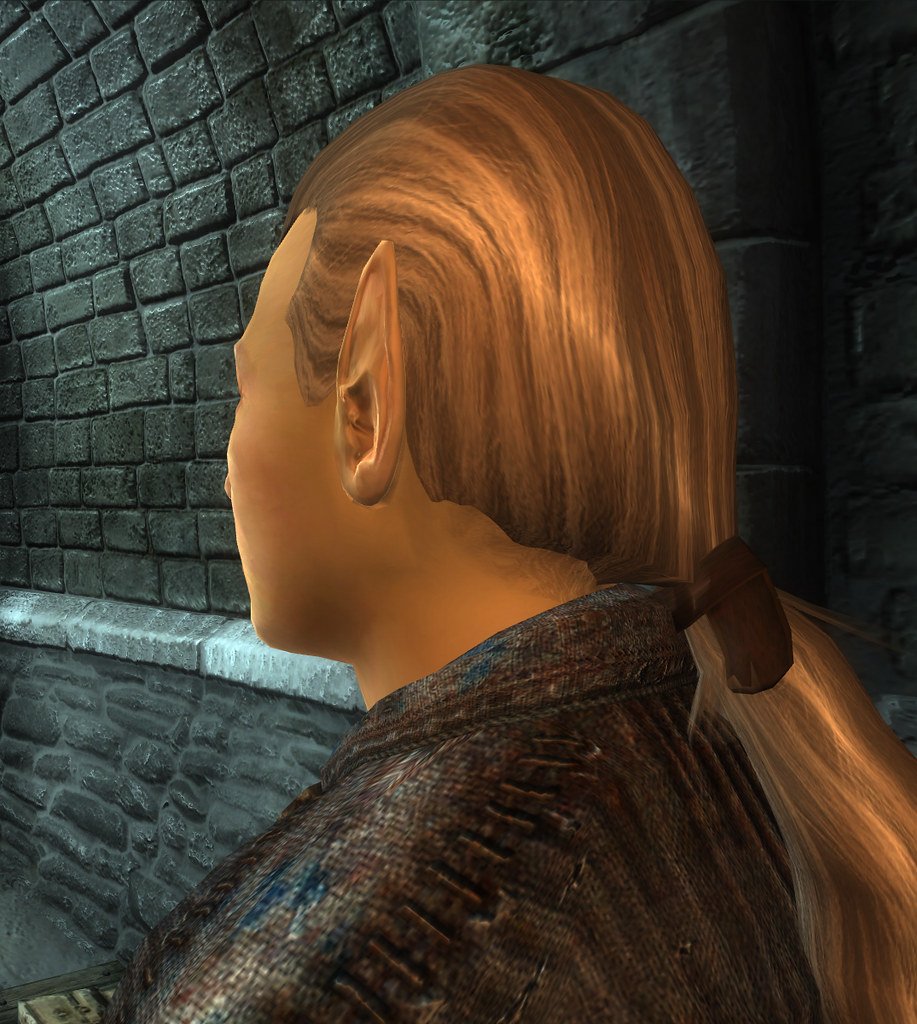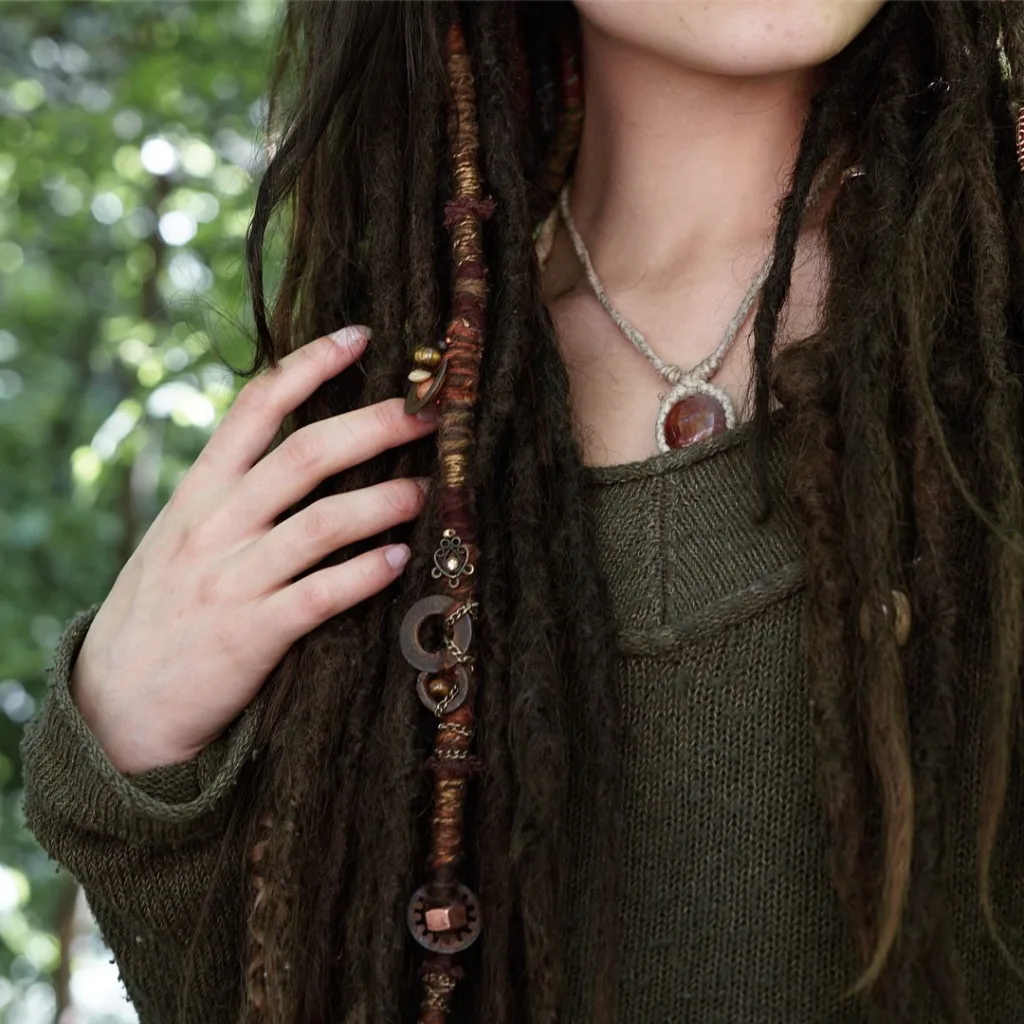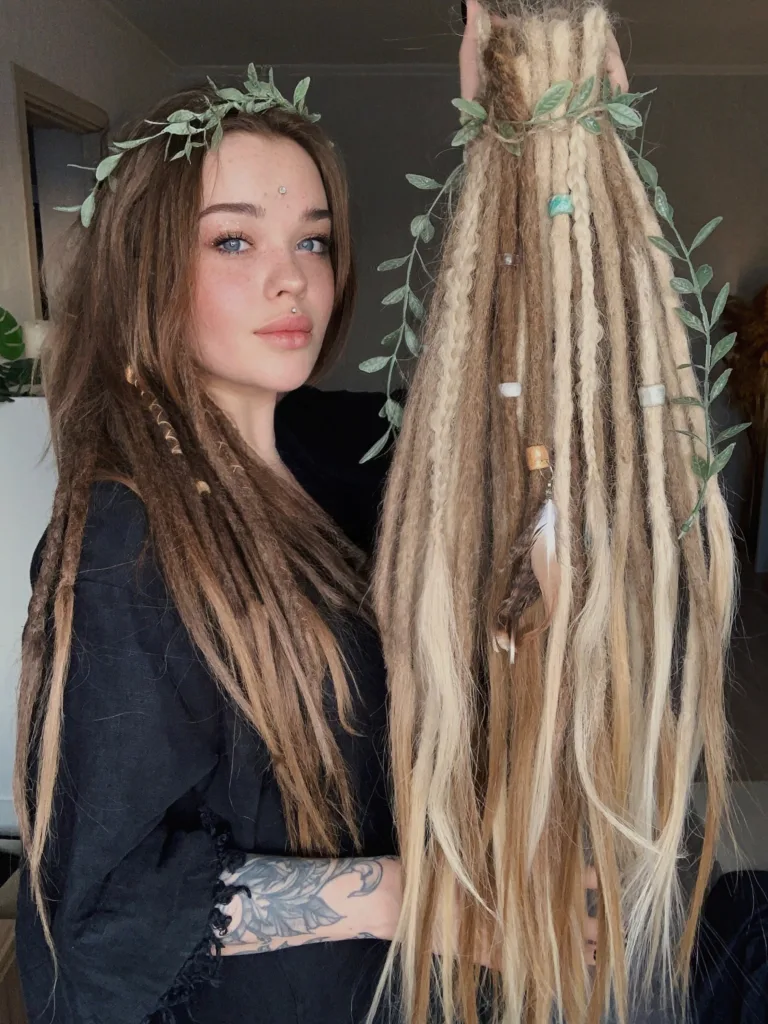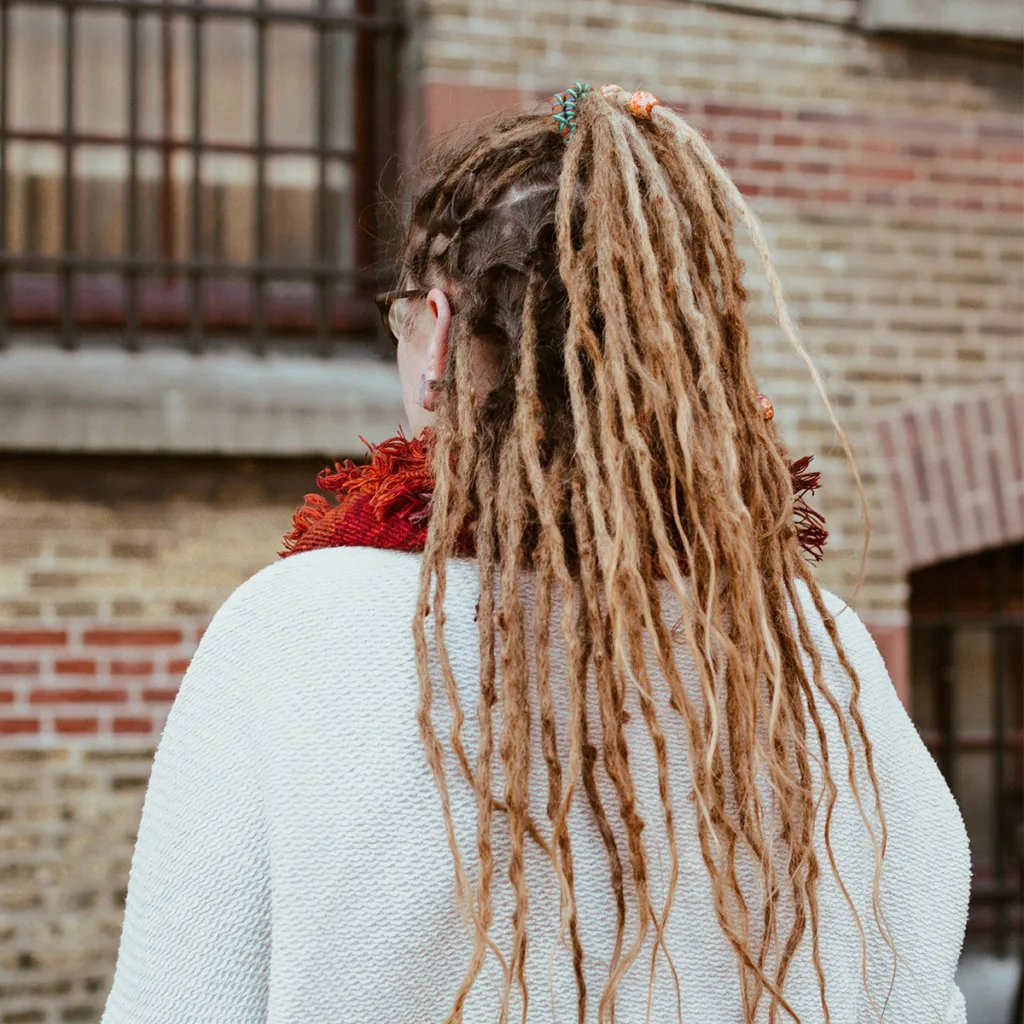Elflocks, also known as fairy locks, are knots that appear in hair overnight, according to folklore. This phenomenon has been documented in many cultures throughout history, but it is most commonly associated with the Celts and their druidic traditions.
The Celts believed that elves would visit their homes at night and play pranks on them, such as tying knots in their hair. These knots, known as elflocks, were said to be impossible to untangle and were considered a sign of good luck.
In fact, attempting to brush out elflocks was thought to anger the elves and bring bad luck upon the person who dared to do so. The Celts believed that the knots would eventually disappear on their own, or could be removed by a druid or other magical practitioner.
Interestingly, the tradition of elflocks is not limited to Celtic folklore. In Norse mythology, it was believed that the god Loki would tie knots in the hair of sleeping maidens as a prank. These knots were known as “Loki’s locks” and were said to be impossible to untangle.
Similarly, in Germanic folklore, it was believed that mischievous spirits known as kobolds would tie knots in the manes of horses in the middle of the night. These knots were said to be a sign of good luck and were not to be removed.
Although the tradition of elflocks has largely died out in modern times, it is still a fascinating glimpse into the superstitions and beliefs of our ancestors. Today, elflocks are often seen as a fashion statement, with many people intentionally creating knots in their hair to achieve a bohemian or “hippie” look.
Whether you believe in the magical properties of elflocks or not, tere is no denying their historical significance and the rich cultural traditions that surround them. So the next time you wake up with a knot in your hair, take a moment to appreciate the folklore and mythology behind this fascinating phenomenon.
The Meaning of Elf Knots
Elf knots are knots that are found in the manes of horses, which are believed to have been made by elves. According to folklore, elves visit stables in the middle of the night to make these knots. It is said that they use the knots as stirrups to ride the horses at nightfall. The knots are often difficult to untangle and can cause problems for the horse’s mane. While there is no scientific evidence to support the existence of elves or their involvement in creating these knots, the legend has been passed down though generations and remains a part of some cultures’ folklore.

The Irish and Dreadlocks
There is some historical evidence to suggest that the Irish did wear dreadlocks. Traditionally, Irish men and women wore their hair long and loose, with women in particular seeing their hair as a symbol of their beauty. However, it is important to note that the term “dreadlocks” has its roots in the Rastafarian movement in Jamaica, which did not exist in Ireland. So while the Irish may have worn their hair in a similar style to dreadlocks, it is not accurate to say that they specifically had “dreadlocks” as we understand them today.
The Origin of Elflocks
Elflocks originated from the early Celts and druids of Briton, Wales, and Scotland. The term refers to the belief in supernatural beings that could cause tangles or knots in a person’s hair while they slept. These beings were called elves, and it was believed that they would play pranks on humans by tangling their hair or braids as they slept. The term “elflocks” comes from the idea that the knots in a person’s hair were caused by the mischievous elves. This belief was prevalent in ancient times and was passed down through generations. Today, the term elflocks is sill used to describe tangled or knotted hair, although the belief in supernatural beings causing them has largely disappeared.
The Origin of Fairy Locs
Fairy locks, also known as elflocks or fairy knots, have their origins in Celtic folklore. The Celts, who lived in Ireland, Scotland, and oher parts of Europe, believed in a world of magical creatures, including fairies and elves. According to their beliefs, these mischievous creatures would sneak into people’s homes at night and play tricks on them, including tying their hair into knots. These knots were considered to be a sign of good luck and were not to be brushed out. Over time, the tradition of fairy locks became part of Celtic mythology and has been passed down through generations in songs, stories, and other forms of art. Today, fairy locks continue to be a popular hairstyle, with many people embracing the mystical and magical origins of this unique hairdo.

Exploring the Meaning of Celtic Locs
The Celts did have a tradition of referring to knotted hair as faerie locks or elf-locks. These were tangles and snarls that young children often woke up with in their hair. According to Celtic folklore, these knots were believed to be caused by mischievous faeries or elves who would visit children while they slept. Mothers would then tell their children that they had caught faerie locks or elf-locks as a way to explain the knotted hair.
The Origin of Dreadlocks: A Look at the First Race to Wear Them
It is important to clarify that dreadlocks are a hairstyle and not specific to any race or ethnicity. However, some of the earliest depictions of dreadlocks can be traced back to the Minoan Civilization, which was one of Europe’s earliest civilizations and was centred in Crete (now part of Greece). The depictions date back to around 1600-1500 BCE, long before the concept of race as we know it today existed. Therefore, dreadlocks cannot be attributed to one particular race, as they have been worn by people of various ethnicities and cultures throughout history. It is worth noting that in contemporary culture, dreadlocks are sometimes assciated with the Rastafari movement, which originated in Jamaica in the 1930s and is primarily associated with people of African descent. However, it is important to recognize that this association is a cultural one and not a biological or racial one.
The Origin of Dreadlocks: Who Was the First Race to Wear Them?
It is difficult to determine which race was the first to wear dreads, as the hairstyle has been used by various cultures throughout history. However, the first piece of written evidence of the use of dreadlocks dates back to 1500BC and is brought to us by the ancient holy Hindu texts called the “Vedas”. Therefore, it can be said that the Hindu culture was aong the earliest to adopt the style. It is also worth noting that dreadlocks have been used by various African cultures for centuries, and the Rastafari movement in Jamaica popularized the style in the Western world in the 20th century.
The Origin of Dreadlocks: A Look at the Culture That Wore Them First
The culture that fist wore dreadlocks is believed to be ancient Egypt. Historical evidence suggests that dreadlocks were commonly worn by the people of ancient Egypt as early as 1400 BCE. Mummies have been discovered with dreadlock wigs, providing concrete proof of the practice. The hairstyle was often associated with spirituality and was worn by priests and other religious figures in ancient Egyptian society. From Egypt, the practice of wearing dreadlocks spread to other parts of Africa and eventually to other cultures around the world. Today, dreadlocks continue to be a popular hairstyle for people of various cultures, religions, and backgrounds.

Religions That Wear Dreadlocks
The religion that is commonly associated with wearing dreadlocks is Rastafarianism. Rastafarians, who follow a spiritual movement that originated in Jamaica in the 1930s, believe that growing their hair long and coiling it into dreadlocks is a spiritual practice. This belief is rooted in the Bible, where it is stated that one should not make baldness upon their head. Therefore, Rastafarians wear their hair in dreadlocks as a symbol of their faith and connection to their African roots. It is worth noting that not all Rastafarians wear dreadlocks, and wearing dreadlocks does not necessarily make one a Rastafarian.
The Origin of Dreadlocks: Jamaican or African?
Dreadlocks are a hairstyle that originated in Africa and were worn by various tribes there. The earliest tribe that can be attributed to this hairstyle is the Masai tribesmen of Kenya. However, the hairstyle became popularized in Jamaica due to the Rastafarian culture. Rastafarians, who are known for their spiritual beliefs and connection to Africa, adopted the hairstyle as a symbol of their identity and rebellion against Western culture. Therefore, while dreadlocks have African origins, they are also closely associated with Jamaican culture and the Rastafarian movement.
Vikings’ Name for Dreadlocks
There is no concrete evidence to suggest what the Vikings called their dreadlocks. However, it is believed that they may have referred to their locks as “elflocks,” a term borrowed from their neighboring Celts. The Vikings and Celts shared close proximity, making it likely that the Vikings adopted this term for their dreadlocks. Despite the lack of written records, it is plausible that elflocks was the name the Vikings used to refer to their dreadlocks.
How Long Do Fairy Locs Last?
Fairy locs are a type of hair extension that is typically made of synthetic hair or yarn. The duration of the fairy locs depends on several factors, such as the maintenance routine, the quality of the hair or yarn used, and the natural growth rate of the individual’s hair. Each strand of fairy locs is fused to a single strand of natural hair, which means that the fairy locs will last as long as the natural hair remains on the head. This could range from a day to a year or even longer. However, most adults retain their fairy locs for a few months befre needing to reapply or remove them. It is important to follow a proper maintenance routine to ensure that the fairy locs last for as long as possible.

Did the Vikings Wear Dreadlocks?
Vikings did wear their hair in dreadlocks. This is supported by written records from cultures that Vikings interacted with. The Vikings were known for their unique hairstyles, which often included braids, twists, and dreadlocks. They would use a variety of methods to achieve these styles, such as backcombing and waxing. The dreadlocks would often be adorned with beads or other decorative items. While there may not be physical evidence of Viking dreadlocks, historical accounts and cultural artifacts suggest that this was indeed a common hairstyle among the Vikings.
The Cultural Significance of Locs
Various cultures have incorporated dreadlocks into their cultural practices. Egyptians are often credited as the first culture to wear dreadlocks, as they have been found on mummies. Other cultures that have historically worn dreadlocks include the Romans, Greeks, Vikings, Indians, Christians, Germans, and Africans. In modern times, the Rastafari movement, which originated in Jamaica, has also popularized the wearing of dreadlocks as a symbol of their faith and culture. Additionally, many individuals from diverse backgrounds and cultures around the world choose to wear dreadlocks as a personal style choice.
Conclusion
Elflocks are a fascinating piece of folklore that has been passed down through generations in European cultures, particularly among the Celts and Druids of Britain, Wales, and Scotland. According to legend, elves were believed to visit stables at night and knot the manes of horses, using them as stirrups to ride at nightfall. Similarly, elves were thought to creep up on people and tie their hair into knots at night, which becme known as elflocks or fairy locks. While historically, Irish men and women wore their hair long and loose, women saw it as a symbol of their beauty. It was considered bad luck to try and brush out these knots, and they were left untouched as a symbol of the supernatural world’s power. Today, elflocks continue to capture the imagination of people worldwide, and their legacy remains a fascinating example of the blend of supernatural folklore and historical traditions.
